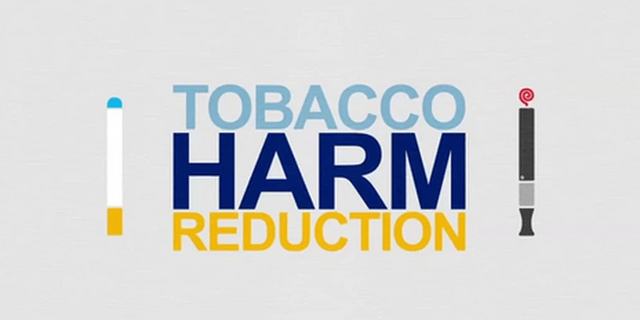In many countries, cigarette packs now come with both graphic and text health warnings to smokers on the health risks associated with their consumption. However, have these warnings deterred smoking?
For people who smoke, quitting remains the best option to avoid the health risks associated with tobacco consumption and non-smokers are advised to never pick up the habit.
The health risks that smokers face come from the many toxic substances contained in cigarette smoke when the cigarettes are burned and not the nicotine that they crave from the cigarette. This is why the scientist Michael Russell famously quoted that “people smoke for nicotine but die from the tar.”
An understanding of the need to reduce the health impact of inhaling the noxious fumes contained in burning tobacco and the pragmatic acceptance of providing reduced risk alternatives for those who cannot quit are some of the raisons d’être for the concept of tobacco harm reduction (THR).
Science has also continued to lend credence to THR as an effective means of reducing the health impact of tobacco consumption and several countries now have science-backed policies for the regulation of reduced risks or alternative tobacco products.
In October 2021, 100 specialists in nicotine science, policy and practice came together to call on the 182 parties (countries) to the Framework Convention on Tobacco Control (FCTC) of the World Health Organisation (WHO) to take a more positive stance on tobacco harm reduction. The letter which was a push back against WHO’s drive for the prohibition or excessive regulation and taxation of vaping products, heated and smokeless tobacco products, was signed by the 100 experts as reported by The Counterfactual by Clive Bates.
While developing and less developed economies seem more aligned with this WHO stand, developed economies have taken the science-led approach. For example, the United States of America’s (USA) food and drug administration (FDA) has licensed some alternative products as “modified risk tobacco products” in acceptance of the science and empirical evidence of their efficacy. This science-based approach to THR, is a public health strategy to reduce the health impact of consuming combustible tobacco products.
In the United Kingdom, the National Institute for Health and Care Excellence (NICE), which issues evidence-based guidance on the most effective methods of prevention, diagnosis and treatment of diseases and ill health, has since published a guidance on tobacco harm reduction.
The guidance supports the use of licensed nicotine containing products (NCPs) to help smokers not currently able to quit to switch to a less harmful option but instructively recognizes that quitting smoking is always the best option for smokers. As a public health strategy, in December 2021, the Daily Mail published reports from the Office of National Statistics that showed smoking rates in Britain dropped by 1.3%, from 15.8% in 2019 to 14.5% in 2020.
The introduction of alternative products and acceptance of THR have also driven down smoking rates in Japan by up to 34% as reported by Frost & Sullivan in a December 2020 report.
The Canadian Public Health Association also in recognition of the efficacy of THR in 2018 issued statements that acknowledge that alternative nicotine delivery products are less risky than combustible tobacco.
Health Canada has issued science-backed statements such as “Completely replacing cigarette smoking with vaping will reduce your exposure to harmful chemicals” among several others to drive the adoption of alternative products by smokers.
In New Zealand, the ministry of health launched a website called Vaping Facts to educate citizens on the facts about vaping with the objective to help smokers quit. The website encourages smokers to vape as a means to quit and has widely published content that indicates that vaping is less risky than smoking.
In Ghana however and across the West and Central Africa region, the knowledge and acceptance of tobacco harm reduction as a public health strategy is remarkably low.
If Ghana opts for a rigorous science-based approach to the adoption of THR and proceeds to foster an environment where proper knowledge of the health benefits of switching to reduced-risk alternatives is consciously and strategically made available to current smokers, the country will invariably experience a drop in smoking rates.
The logic holds true that so long as the alternative products from THR separate tobacco consumers from the source of risk, then they not only reduce the risk of harm but also reduce the smoking rates.
****
Lanre Odusile is a public health communication specialist
Latest Stories
-
Expelled South African envoy accuses Trump administration of racism
5 minutes -
Local Government Minister proposes sanitation levy to address Ghana’s waste management crisis
8 hours -
Central University Vice Chancellor calls for Fee Voucher System to support private universities
8 hours -
Heritage Month Cooking Competition showcases Ghana’s culinary richness
8 hours -
His finest hour yet: The Bawumia concession and lessons in leadership
10 hours -
EC reschedules nomination for Nkoranza North and South District Level Elections
11 hours -
Energy Minister must recover stolen ECG containers or be held accountable – Ntim Fordjour
11 hours -
CLOGSAG suspends strike over Births and Deaths Registry appointment
11 hours -
Ing. Ludwig Annang Hesse is new president of GhIE
11 hours -
One artiste can’t take Ghana to the top, we must collaborate – Edem
11 hours -
Presidency hasn’t ordered NIB to investigate Akufo-Addo’s travels – Felix Kwakye Ofosu
11 hours -
Edem explains how 2023 motor accident made him lose gigs
12 hours -
Smoke detectors and modern technology: A game-changer in Ghana’s fight against market and home fires?
12 hours -
Provisional results for 2025 WASSCE First Series released
12 hours -
M&O Law Consult’s Emmanuel Mate-Kole awarded for ‘Excellence in Strategic Law Firm Leadership Management’
12 hours

